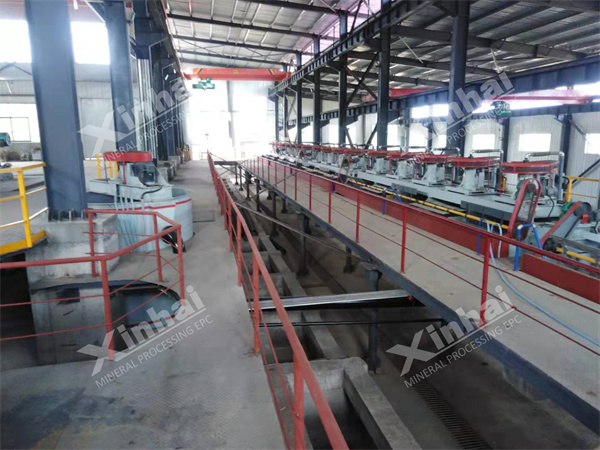Nickel oxide, as an inorganic compound, is composed of nickel and oxygen elements, with the chemical formula NiO. It is insoluble in water and liquid ammonia, but soluble in sulfuric acid, nitric acid, hydrochloric acid, and ammonia water. Nickel oxide has a cubic crystal structure, similar to sodium chloride. Each nickel atom is surrounded by six nearby oxygen atoms, which form a regular octahedron. The nickel atom is located at the center. Due to the complex nature of nickel oxide ore, flotation method is often used in the beneficiation process. The common flotation methods for nickel ore currently include direct flotation, sulfide flotation, and combined flotation.

Direct flotation of nickel oxide is a beneficiation method that uses fatty acid collectors to make the surface of nickel oxide ore become hydrophobic under a suitable pulp environment (usually using a regulator to adjust the pH, etc.), and bring it to the pulp surface through bubbles to form a foam layer, thus realizing separation from gangue minerals. Collectors are usually fatty acids such as oleic acid and sodium oleate, while adjusters are mostly alkaline substances such as sodium carbonate and sodium hydroxide. The flotation process generally includes coarse selection, fine selection, and sweeping selection. Coarse selection mainly involves selecting most useful minerals into the coarse concentrate; Selection is the further purification of coarse concentrate to remove impurities; Sweeping is the process of re sorting flotation tailings to recover useful minerals and improve recovery rates.
The nickel oxide sulfide flotation method is a beneficiation method that increases the floatability of nickel oxide ore by adding sulfiding agent to vulcanize its surface, and then separates nickel minerals from gangue according to the foam flotation principle. In the flotation process, sulfurizing agents such as sodium sulfide and sodium hydrosulfide are first added to the slurry to form a sulfide film on the surface of the nickel oxide ore. After sulfurization treatment, the surface properties of minerals change and are more easily captured by traditional flotation collectors. This method is similar to direct flotation and includes steps such as coarse selection, fine selection, and sweeping selection. However, due to the addition of sulfurization treatment, it is necessary to strictly control the amount of sulfurizing agent and sulfurization time to ensure good sulfurization effect. This method is particularly suitable for processing complex nickel oxide ores, especially those in which nickel is dispersed in vein minerals in a homogeneous manner and has a very fine particle size.
Nickel oxide ore often coexists with other valuable elements, such as copper, cobalt, etc. For such situations, a single flotation method may not necessarily achieve ideal recovery rates, so combined flotation methods are often used for mineral processing. Multiple flotation methods such as direct flotation and sulfide flotation can be combined, and different flotation methods can be selected for application at different stages based on the properties and characteristics of the ore to achieve ideal flotation results.
In summary, there are various flotation methods for nickel oxide. In actual beneficiation plants, different flotation methods are selected for nickel oxide flotation based on the differences in the properties of nickel ores. Therefore, it is recommended to conduct beneficiation experiments and design suitable nickel oxide flotation processes through analysis.